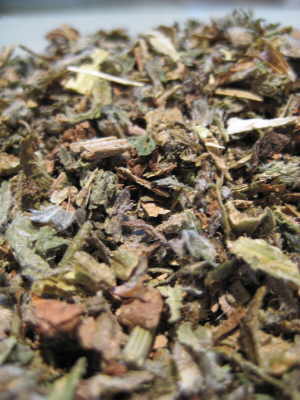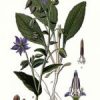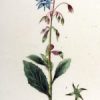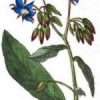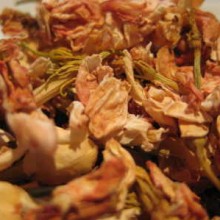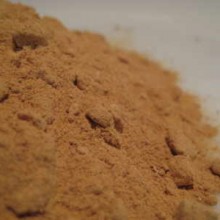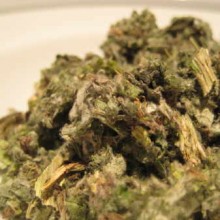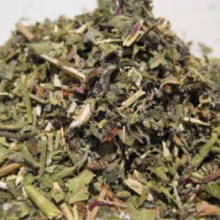Borage Leaf is an annual herb originating in Syria, but now naturalised throughout the Mediterranean region, as well as most of Europe, North Africa, and Iran. It is also known as Starflower.
Medicinal Uses and Constituents :-
Borage is extremely rich in oleic and palmitic acid, conferring a hypocholesterolemic effect. It is considered by many naturopathic practitioners to be a good remedy for PMS and menopause symptoms such as the hot flushes.
Borage Leaf is also sometimes indicated to alleviate and heal colds, bronchitis, and respiratory infections in general for its anti-inflammatory and balsamic properties. Both the flowers and the leaves can be prepared in infusion to take advantage of its medicinal properties. Around 40 to 50 grams of the herb to half a litre of water is considered reasonable.
The leaves have been found to contain small amounts (10 ppm of dried herb) of the liver-toxic pyrrolizidine alkaloids: intermedine, lycopsamine, amabiline and supinine. They taste like fresh cucumber and are used in salads and soups especially in Germany.
Borage is also rich in oleic and palmitic acid, conferring a hypocholesterolemic effect. This oil, which has recently been commercialised, may regulate metabolism and the hormonal system, and is considered by many naturopathic practitioners to be a good remedy for PMS and menopause symptoms such as the hot flushes. Borage is also sometimes indicated to alleviate and heal colds, bronchitis, and respiratory infections in general for its anti-inflammatory and balsamic properties. Both the flowers and the leaves can be prepared in infusion to take advantage of its medicinal properties.
Culinary Uses for Borage Leaf:-
One of the better known recipes with borage is the Green Sauce made in Frankfurt. Frankfurter Grüne Sauce, as it is called in Germany, is made from seven herbs: parsley, chervil, chives, cress, sorrel, burnet and borage.
Borage is also an ingredient in the traditional recipe for a Pimm’s Cup.
In the Spanish regions of Aragón and Navarra it’s also a common dish, one of the simplest recipes uses winter bourages (because these have grown slowly and taste better), bourages are cooked before flowers appear (but it’s not mandatory as flowers can be put with the rest of the bourage into the boiling water too) and are usually boiled with a pair of potatoes. Once it’s on the dish, the potatoes and borage are seasoned with a little olive oil and salt.
The flower, which contains the non-toxic pyrrolizidine alkaloid thesinine, has a sweet honey-like taste and is often used to decorate desserts and dishes. If frozen into ice-cubes, the flowers become exotic drink coolers.

